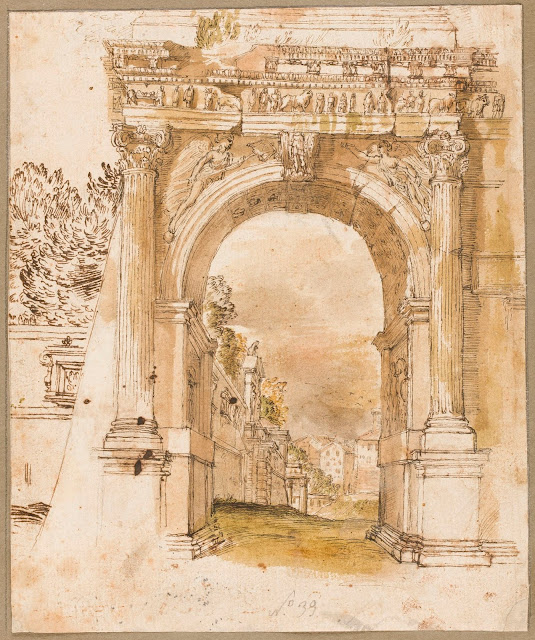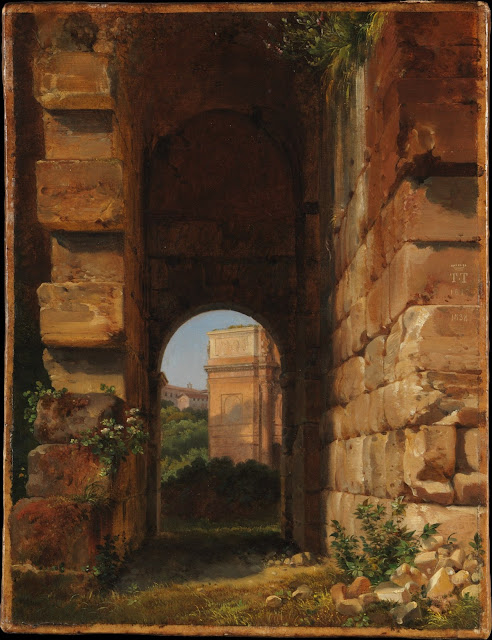 |
| Robert Macpherson Arch of Titus albumen silver print 1850s Getty |
European artists of the 17th and 18th and 19th centuries came to Rome and made pictures of the triumphal arches left behind by the ancients. What those arches looked like to successive waves of idealistic visitors can today be pondered because museums have preserved their long-ago impressions. The monuments themselves have in most cases been greatly spruced up since these images were made. Undoubtedly they were more suggestive – and more powerful as works of art – when the marks of time were more prominent.
 |
| French painter Arch of Titus oil c. 1824-35 Metropolitan Museum |
 |
| Gian Paolo Panini Arch of Titus drawing 17th century Prado |
 |
| Juan Bautista Martínez del Mazo Arch of Titus oil 1657 Prado |
 |
| Domenichino Triumphal Arch oil c. 1607-15 Prado |
 |
| Anonymous Arch of Constantine albumen silver print 1860 Getty |
 |
| Anonymous Arch of Constantine albumen silver print 1860 Getty |
 |
| Robert Macpherson Arch of Constantine albumen silver print 1850s Getty |
 |
| Gian Paolo Panini Architectural Capriccio of Rome with Arch of Constantine oil c. 1740 Royal Collection, Great Britain |
 |
| Canaletto Arch of Constantine & Colosseum c. 1742-45 Getty |
 |
| Lancelot Turpin de Crissé Arch of Constantine c. 1818-38 Metropolitan Museum |
 |
| Samuel Prout Arch of Constantine c. 1850 Victoria & Albert Museum |
 |
| Robert Macpherson Arch of Drusus albumen silver print 1860s Getty |
 |
| Robert Macpherson Arch of Septimus Severus albumen silver print 1850s Getty |
 |
| Anonymous Arch of Septimus Severus and Temple of Vespasian albumen silver print 1860 Getty |
 |
| Anonymous Temple of Vesta albumen silver print 1860 Getty |
After all those magnificent arches, the small round Temple of Vesta (immediately above) looks a little forlorn in the photograph from 1860. The pointed roof was a late addition, not in keeping with the original structure. In the foreground a Baroque fountain inspired by Bernini features a pair of intertwined mermen rising from a heap of carved marble rocks and supporting a scalloped basin. There are woman washing clothes on either side of the wide lower basin, though they are only ghosts in the time-exposure. Grass and weeds grow from the mermen's rocks. The fountain is in much better shape now, gushing thick spouts of water and not a weed in sight, but on the down side it is surrounded by roaring traffic instead of washerwomen.